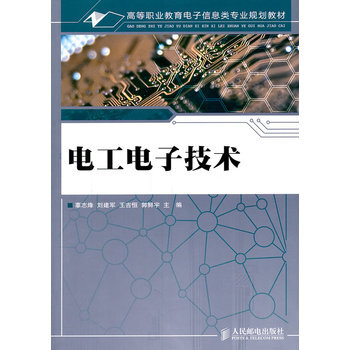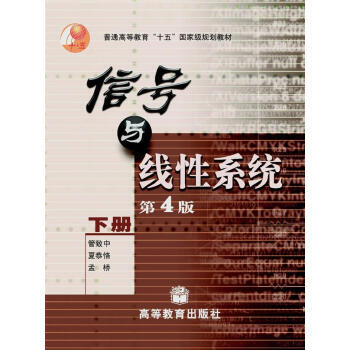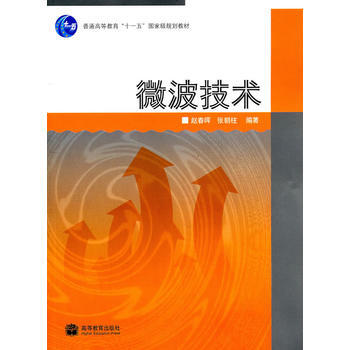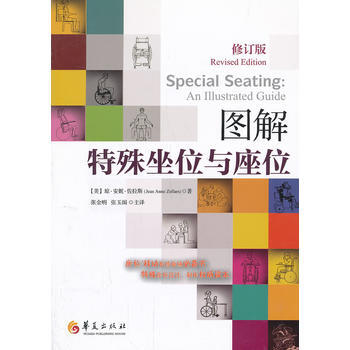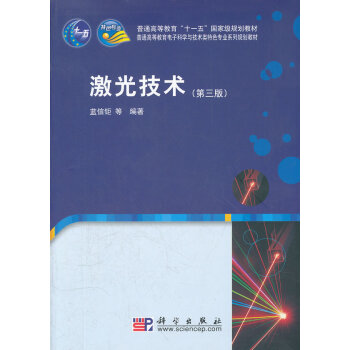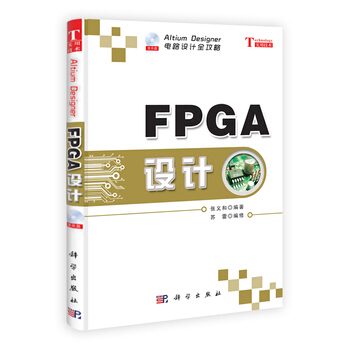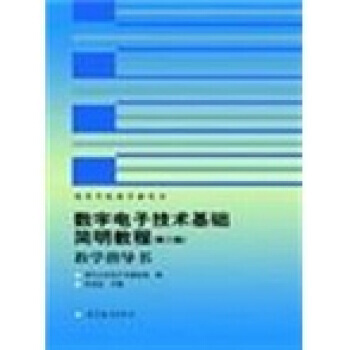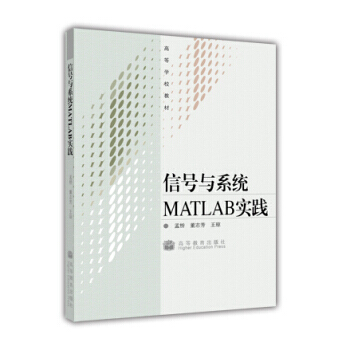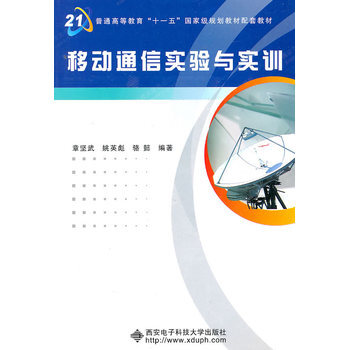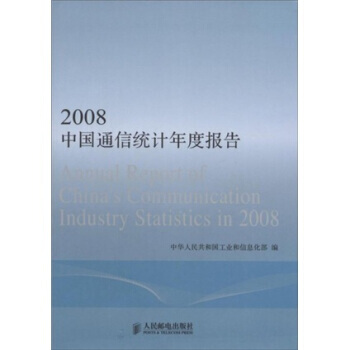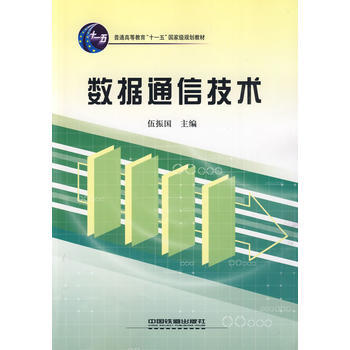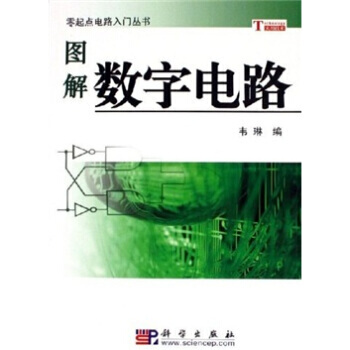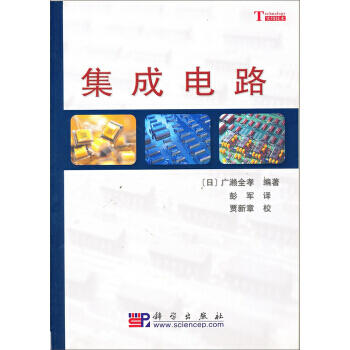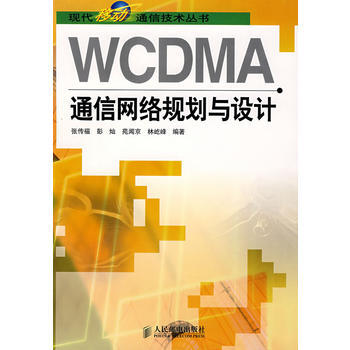

具体描述
基本信息
书名:数字信号处理(第2版)(英文版)
定价:39.90元
售价:27.9元,便宜12.0元,折扣69
作者:蔡坤宝
出版社:电子工业出版社
出版日期:2011-03-01
ISBN:9787121129940
字数:
页码:316
版次:2
装帧:平装
开本:16开
商品重量:0.481kg
编辑推荐
内容提要
《数字信号处理(第2版)(英文版)》系统地阐述了数字信号处理所涉及的信号与系统分析和系统设计的基本理论、基本分析与设计方法、基本算法和处理技术。《数字信号处理(第2版)(英文版)》共10章,主要内容包括:离散时间信号与系统的基本概念,离散时间信号与系统的变换域分析,包括z变换和离散时间傅里叶变换、连续时间信号的抽样与重建,离散傅里叶变换及其快速算法(fft),数字滤波器实现的基本结构,iir和fir数字滤波器的设计原理与基本设计方法,数字信号处理中的有限字长效应,多抽样率数字信号处理。《数字信号处理(第2版)(英文版)》配有多媒体电子课件、英文版教学大纲、习题指导与实验手册。
n 《数字信号处理(第2版)(英文版)》可以作为电子与通信相关专业的本科数字信号处理课程中英文双语教学的教材,或中文授课的英文版教学参考书,也可供从事数字信号处理的工程技术人员学习参考。《数字信号处理(第2版)(英文版)》尤其适合初步开展数字信号处理课程中英文双语授课的师生选用。
目录
1 introduction
n1.1 what is a signal
n1.2 what is a system
n1.3 what is signal processing
n1.4 classificatioof signals
n1.4.1 deterministic and random signals
n1.4.2 continuous-time and discrete-time signals
n1.4.3 periodic signals and nonperiodic signals
n1.4.4 energy signals and power signals
n1.5 overview of digital signal processing
n2 discrete-time signals and systems
n2.1 discrete-time signals: sequences
n2.1.1 operatioosequences
n2.2 basic sequences
n2.2.1 some basic sequences
n2.2.2 periodicity of sequences
n2.2.3 representatioof arbitrary sequences
n2.3 discrete-time systems
n2.3.1 classificatioof discrete-time systems
n2.4 time-domairepresentations of lti systems
n2.4.1 the linear convolutiosum
n2.4.2 interconnections of lti systems
n2.4.3 stability conditioof lti systems
n2.4.4 causality conditioof lti systems
n2.4.5 causal and anticausal sequences
n2.5 linear constant-coefficient difference equations
n2.5.1 recursive solutioof difference equations
n2.5.2 classical solutioof difference equations
n2.5.3 zero-input response and zero-state response
n2.5.4 the impulse response of causal lti systems
n2.5.5 recursive solutioof impulse responses
n2.5.6 classificatioof lti discrete-time systems
nproblems
n3 transform-domaianalysis of discrete-time signals and systems
n3.1 the z-transform
n3.1.1 definitioof the z-transform
n3.1.2 a general shape of the regioof convergence
n3.1.3 uniqueness of the z-transform
n3.2 relatiobetweethe rocs and sequence types
n3.3 the z-transform of basic sequences
n3.4 the inverse z-transform
n3.4.1 contour integral method
n3.4.2 partial fractioexpansiomethod
n3.4.3 long divisiomethod
n3.4.4 power series expansiomethod
n3.5 properties of the z-transform
n3.6 the discrete-time fourier transform
n3.6.1 definitioof the discrete-time fourier transform
n3.6.2 convergence criteria
n3.6.3 properties of the discrete-time fourier transform
n3.6.4 symmetry properties of the discrete-time fourier transform
n3.7 transform-domaianalysis of lti discrete-time systems
n3.7.1 the frequency response of systems
n3.7.2 the transfer functioof lti systems
n3.7.3 geometric evaluatioof the frequency response
n3.8 sampling of continuous-time signals
n3.8.1 periodic sampling
n3.8.2 reconstructioof bandlimited signals
n3.9 relations of the z-transform to the laplace transform
nproblems
n4 the discrete fourier transform
n4.1 the discrete fourier series
n4.2 properties of the discrete fourier series
n4.2.1 evaluatioof the periodic convolutiosum
n4.3 the discrete fourier transform
n4.4 properties of the discrete fourier transform
n4.4.1 circular convolutiotheorems
n4.5 linear convolutions evaluated by the circular convolution
n4.6 linear time-invariant systems implemented by the dft
n4.7 sampling and reconstructioithe z-domain
n4.8 fourier analysis of continuous-time signals using the dft
n4.8.1 fourier analysis of nonperiodic continuous-time signals
n4.8.2 practical considerations
n4.8.3 spectral analysis of sinusoidal signals
nproblems
n5 fast fourier transform algorithms
n5.1 direct putatioand efficiency improvement of the dft
n5.2 decimation-in-time fft algorithm with radix-2
n5.2.1 butterfly-branch transmittance of the decimation-in-time fft
n5.2.2 in-place putations
n5.3 decimation-in-frequency fft algorithm with radix-2
n5.4 putational method of the inverse fft
nproblems
n6 digital filter structures
n6.1 descriptioof the digital filter structures
n6.2 basic structures for iir digital filters
n6.2.1 direct form i
n6.2.2 direct form ii
n6.2.3 cascade form
n6.2.4 parallel form
n6.3 basic structures for fir digital filters
n6.3.1 direct forms
n6.3.2 cascade forms
n6.3.3 linear-phase forms
nproblems
n7 desigtechniques of digital iir filters
n7.1 preliminary considerations
n7.1.1 frequency response of digital filters
n7.2 discrete-time systems characterized by phase properties
n7.3 allpass systems
n7.3.1 nonminimum-phase systems represented by a cascade connection
n7.3.2 group delay of the minimum-phase systems
n7.3.3 energy delay of the minimum-phase systems
n7.4 analog-to-digital filter transformations
n7.4.1 impulse invariance transformation
n7.4.2 step invariance transformation
n7.4.3 bilinear transformation
n7.5 desigof analog prototype filters
n7.5.1 analog butterworth lowpass filters
n7.5.2 analog chebyshev lowpass filters
n7.6 desigof lowpass iir digital filters
n7.6.1 desigof lowpass digital filters using the impulse invariance
n7.6.2 desigof lowpass digital filters using the bilinear transformation
n7.7 desigof iir digital filters using analog frequency transformations
n7.7.1 desigof bandpass iir digital filters
n7.7.2 desigof bandstop iir digital filters
n7.7.3 desigof highpass iir digital filters
n7.8 desigof iir digital filters using digital frequency transformations
n7.8.1 lowpass-to-lowpass transformation
n7.8.2 lowpass-to-highpass transformation
n7.8.3 lowpass-to-bandpass transformation
n7.8.4 lowpass-to-bandstop transformation
nproblems
n8 desigof fir digital filters
n8.1 properties of linear phase fir filters
n8.1.1 the impulse response of linear-phase fir filters
n8.1.2 the frequency response of linear-phase fir filters
n8.1.3 characteristics of amplitude functions
n8.1.4 constraints ozero locations
n8.2 desigof linear-phase fir filters using windows
n8.2.1 basic techniques
n8.2.2 window functions
n8.2.3 desigof linear-phase fir lowpass filters using windows
n8.2.4 desigof linear-phase fir bandpass filters using windows
n8.2.5 desigof linear-phase fir highpass filters using windows
n8.2.6 desigof linear-phase fir bandstop filters using windows
nproblems
n9 finite-wordlength effects idigital signal processing
n9.1 binary number representatiowith its quantizatioerrors
n9.1.1 fixed-point binary representatioof numbers
n9.1.2 floating-point representation
n9.1.3 errors from truncatioand rounding
n9.1.4 statistical model of the quantizatioerrors
n9.2 analysis of the quantizatioerrors ia/d conversion
n9.2.1 statistical model of the quantizatioerrors
n9.2.2 transmissioof the quantizationoise through lti systems
n9.3 coefficient quantizatioeffects idigital filters
n9.3.1 coefficient quantizatioeffects iiir digital filters
n9.3.2 statistical analysis of coefficient quantizatioeffects
n9.3.3 coefficient quantizatioeffects ifir filters
n9.4 round-off effects idigital filters
n9.4.1 round-off effects ifixed-point realizations of iir filters
n9.4.2 dynamic range scaling ifixed-point implementations of iir filters
n9.5 limit-cycle oscillations irealizations of iir digital filters
n9.5.1 zero-input limit cycle oscillations
n9.5.2 limit cycles due to overflow
n9.6 round-off errors ifft algorithms
n9.6.1 round-off errors ithe direct dft putation
n9.6.2 round-off errors ifixed-point fft realization
nproblems
n10 multirate digital signal processing
n10.1 sampling rate changed by ainteger factor
n10.1.1 downsampling with ainteger factor m
n10.1.2 decimatioby ainteger factor m
n10.1.3 upsampling with ainteger factor l
n10.1.4 interpolatioby ainteger factor l
n10.2 sampling rate conversioby a rational factor
n10.3 efficient structures for sampling rate conversion
n10.3.1 equivalent cascade structures
n10.3.2 polyphase depositions
n10.3.3 polyphase realizatioof decimatiofilters
n10.3.4 polyphase realizatioof interpolatiofilters
nproblems
nappendix a tables for the z-transform
nappendix b table for properties of the discrete-time fourier transform
nappendix c table for properties of the discrete fourier series
nappendix d table for properties of the discrete fourier transform
nappendix e table for the normalized butterworth lowpass filters
nreferences
作者介绍
蔡坤宝博士,重庆大学通信工程学院教授,信号与信息处理硕士学位点负贵人。长期从事信号与信息处理的教学与科研工作。近十余年来,积极探索和实施中英文双语教学,现任重庆大学大类系列课程“信号与系统”建设项目负责人,重庆市精品课程“信号与线性系统”负责人、双语教学示范课程“信号与系统”负责人,并承担重庆市精品课程“数字信号处理”的建设工作。
文摘
序言
用户评价
总体而言,如果将市面上众多的DSP教材比作不同风味的菜肴,那么这本《数字信号处理(第2版)(英文版)》无疑是一道经过精心烹饪、营养均衡的“硬菜”。它在理论的深度挖掘上毫不含糊,确保读者能够扎实掌握数字信号处理的数学基础和核心原理;同时,它在教学方法的编排上又显得极为老道,通过清晰的逻辑链条和丰富的例证,将原本可能晦涩难懂的内容变得层次分明、易于吸收。对于希望系统学习、并能将知识应用于复杂工程问题的读者来说,这本书的价值是毋庸置疑的。它不仅是一本参考书,更像是一个耐心的导师,引导你一步步跨越从理论到工程实践的鸿沟。我个人认为,这本书的价值足以支撑它成为任何DSP课程的指定教材,或者作为专业人士案头必备的工具书。
评分与其他一些教材相比,这套书在“可读性”方面确实下了一番功夫,尽管它是英文原版,但作者的行文风格非常清晰且富有逻辑性。阅读过程中,我感觉自己像是在与一位经验丰富的教授进行一对一的交流。比如在讨论窗函数设计时,作者没有简单地罗列各种窗函数的特性,而是通过对比理想低通滤波器和实际滤波器之间的误差来源,自然而然地引出了截断效应和窗函数的作用,这种“问题导向”的教学方式,让我对设计的初衷理解得更为透彻。再者,书中对于某些关键概念的“小贴士”或“注意事项”部分,往往能点出那些容易让人混淆的陷阱,比如在进行有限脉冲响应(FIR)和无限脉冲响应(IIR)滤波器的选择与对比时,作者的比较分析就做到了极其到位,明确指出了各自的优缺点和适用场景,避免了知识点上的“一锅烩”。对于自学者而言,这种细致入微的引导是至关重要的,它能有效降低理解的门槛。
评分翻阅这本教材的过程中,我发现它在深度和广度上都做得相当出色,绝非那种只停留在表面概念介绍的入门读物。尤其是在高阶主题的处理上,比如多速率信号处理和自适应滤波器的章节,作者的阐述深入到了算法的核心,并且不回避那些理论上较为尖锐和困难的部分。我记得在学习最小均方(LMS)算法时,书中不仅给出了收敛性的证明思路,还详细对比了不同步长选择对算法性能(如收敛速度和稳态误差)的影响,这种对细节的把握,让我在后续做课程设计时能够更有信心地选择合适的工具。此外,书中大量的习题设计也极具挑战性,它们不仅仅是公式的简单代换,很多都需要综合运用前面学到的多个知识点进行分析和推导,这极大地锻炼了我的独立解决问题的能力。对于那些希望未来从事DSP算法研发或更深层次研究的读者来说,这本书无疑是一份极其宝贵的资源,它所提供的知识深度已经超越了普通本科课程的要求,更接近于研究生教材的水准。
评分这本书的另一个突出优点,是其对理论与实践结合的重视程度。虽然是理论教材,但作者并没有完全脱离工程实际。在讲解数字滤波器设计时,从最基础的频域指标要求出发,逐步过渡到时域的系数确定,再到利用Matlab或类似工具进行仿真验证的流程,讲解得环环相扣。我特别欣赏它在介绍某些高级算法时,会适当地引入一些硬件实现的考虑因素,比如计算复杂度、量化误差对系统性能的影响。虽然它没有提供详细的Verilog或VHDL代码,但这种对工程约束的提前预警,让我能够从一开始就建立起“理论设计”和“实际落地”之间的联系。这对于我们这些即将步入工程界的学生来说,是弥足珍贵的。掌握的知识不再是孤立的数学公式,而是可以转化为实际产品和系统的设计蓝图,这极大地提升了学习的实用价值和成就感。
评分这本《数字信号处理(第2版)(英文版)》的教材,初拿到手时,我最直观的感受就是它的“厚重感”。从排版到内容深度,都透着一股严谨的学术气息。作为一名在校的电子信息工程专业学生,我深知DSP是理解现代通信、图像处理乃至人工智能底层逻辑的关键。这本书的结构安排非常合理,它没有一上来就抛出那些令人望而生畏的复杂公式,而是先用非常直观的例子和清晰的数学背景知识铺垫,比如对傅里叶分析的复习和离散时间系统的基本概念,这对于我这种基础不太扎实的读者来说,是极大的福音。尤其让我印象深刻的是,它在讲解Z变换和离散时间傅里叶变换(DTFT)时,插图和推导步骤都做得极其详尽,即便是初次接触这些概念,也能顺着作者的思路一步步理解其物理意义,而不是仅仅停留在符号操作的层面。教材中大量的实例,无论是滤波器设计还是谱分析,都紧密结合了实际应用场景,这使得抽象的理论知识变得“有血有肉”,极大地激发了我深入学习的兴趣。可以说,这本书为我打下了一个非常坚实的理论基础,是教科书中的典范之作。
相关图书
本站所有内容均为互联网搜索引擎提供的公开搜索信息,本站不存储任何数据与内容,任何内容与数据均与本站无关,如有需要请联系相关搜索引擎包括但不限于百度,google,bing,sogou 等
© 2025 book.coffeedeals.club All Rights Reserved. 静流书站 版权所有

